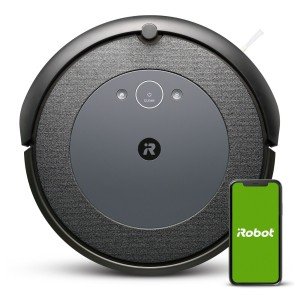12 Stats About Robot Vacuum Cleaner To Make You Take A Look At Other People
The Rise of Robot Vacuum Cleaners in Industrial Settings
Over the last few years, the landscape of industrial cleaning has actually seen a considerable change with the introduction of robot vacuum cleaners. These automated gadgets are not just a novelty for homes; they have gained traction in storage facilities, making plants, and other industrial environments. This short article explores the functionality, benefits, and considerations of robot vacuum within the industrial context, while addressing some regularly asked questions.
What are Robot Vacuum Cleaners?
Robot vacuum cleaners are automated cleaning gadgets equipped with advanced sensing units and innovation that enable them to navigate around spaces, spot dirt, and vacuum surfaces without direct human intervention. In Full Posting , they are developed to deal with a variety of debris types, assist in regular cleaning schedules, and improve overall functional efficiency.
Table 1: Key Features of Industrial Robot Vacuum Cleaners
Function
Description
Navigation
Utilizes LiDAR or camera-based navigation for precise mapping.
Size and Design
Compact and robust design to suit tight spaces and endure hard environments.
Self-Charging
Immediately returns to its docking station for charging.
Dustbin Capacity
Bigger dustbin suited for industrial particles sizes and volumes.
Programs
Can be set for scheduling and specific cleaning jobs.
Data Collecting
Equipped with sensing units to collect data for maintenance and cleaning analysis.
Benefits of Robot Vacuum Cleaners in Industrial Settings
The adoption of robot vacuum includes a myriad of benefits:
Increased Efficiency:
- 24/7 Operation: Unlike human cleaners, robots can run all the time, contributing to constant cleanliness without downtime.
- Time-Saving: Automated cleaning allows workers to focus on core jobs rather than cleaning tasks.
Cost Savings:
- Labor Costs: Maintaining a robot vacuum can lower the need for a large cleaning staff, decreasing overall labor expenses.
- Functional Efficiency: With improved tidiness and lowered downtime due to upkeep concerns, companies can minimize functional costs.
Improved Safety:
- Reduced Risk: By reducing the human participation in harmful cleaning environments, the risk of accidents is lessened.
- Constant Cleaning: Robot vacuums ensure that areas are consistently cleaned, decreasing slip threats and unhealthy environments.
Increased Flexibility:
- Customizable Cleaning Routes: These machines can be configured to clean specific areas or floors, adapting to altering industrial designs.
- Variety of Surfaces: Industrial robot vacuums can handle various floor covering types, from concrete to tiles, making them versatile.
Environmental Impact:
- Sustainable Cleaning Solutions: Many designs use minimal water and eco-friendly cleaning services, helping in business sustainability efforts.
Table 2: Industrial Applications of Robot Vacuum Cleaners
Industry
Application
Manufacturing
Cleaning assembly line and assembly areas.
Warehousing
Maintaining tidy and organized storage spaces.
Food Processing
Ensuring tidiness in delicate locations to satisfy hygiene standards.
Pharmaceuticals
Keeping ultra-clean environments for production.
Logistics and Distribution
Keeping paths clear for efficient operation.
Difficulties and Considerations
While the advantages are substantial, businesses must likewise consider numerous difficulties:
- Initial Investment: The in advance expenses of acquiring industrial robot vacuum can be considerable, though long-term cost savings may offset this expenditure.
- Upkeep and Repairs: Regular upkeep is important to keep the robotic systems working optimally, and repair work can sustain additional expenses.
- Combination: Businesses may require to integrate these makers into existing workflows, which can need time and adjustment.
- Training and Support: Staff may need training to effectively manage these makers, particularly when repairing or programming is needed.
Frequently Asked Questions About Robot Vacuum Cleaners in Industrial Settings
1. How much do industrial robot vacuum cleaners cost?
The expense can range from a couple of thousand to tens of thousands of dollars, depending upon requirements, functions, and brand name.
2. What kinds of surface areas can they clean?
Robot vacuum cleaners are ideal for different surface areas including carpets, tiles, concrete, and even some wooden floors.
3. How do they browse complicated industrial environments?
The majority of industrial robot vacuums use innovative navigation systems like LiDAR, video cameras, and sensing units to map out and adjust to their surroundings for effective cleaning.
4. Can they clean up large locations without human intervention?
Yes, industrial robot vacuums are developed to tidy substantial areas with pre-programmed paths and schedules, efficiently operating autonomously.
5. Are these robots ecologically friendly?
Many designs focus on performance and reduce water usage, making them a more eco-friendly cleaning alternative compared to traditional techniques.
The introduction of robot vacuum cleaners into industrial environments represents a remarkable development in cleaning technology. With their capability to enhance effectiveness, minimize labor expenses, and maintain safety, these automated systems are paving the method for smarter and cleaner industrial operations. While obstacles may exist, the long-term advantages and technological improvements are motivating for industries looking for to enhance their cleaning procedures. As innovation continues to develop, we can anticipate more developments in robot vacuum that will transform industrial cleaning practices even more.
